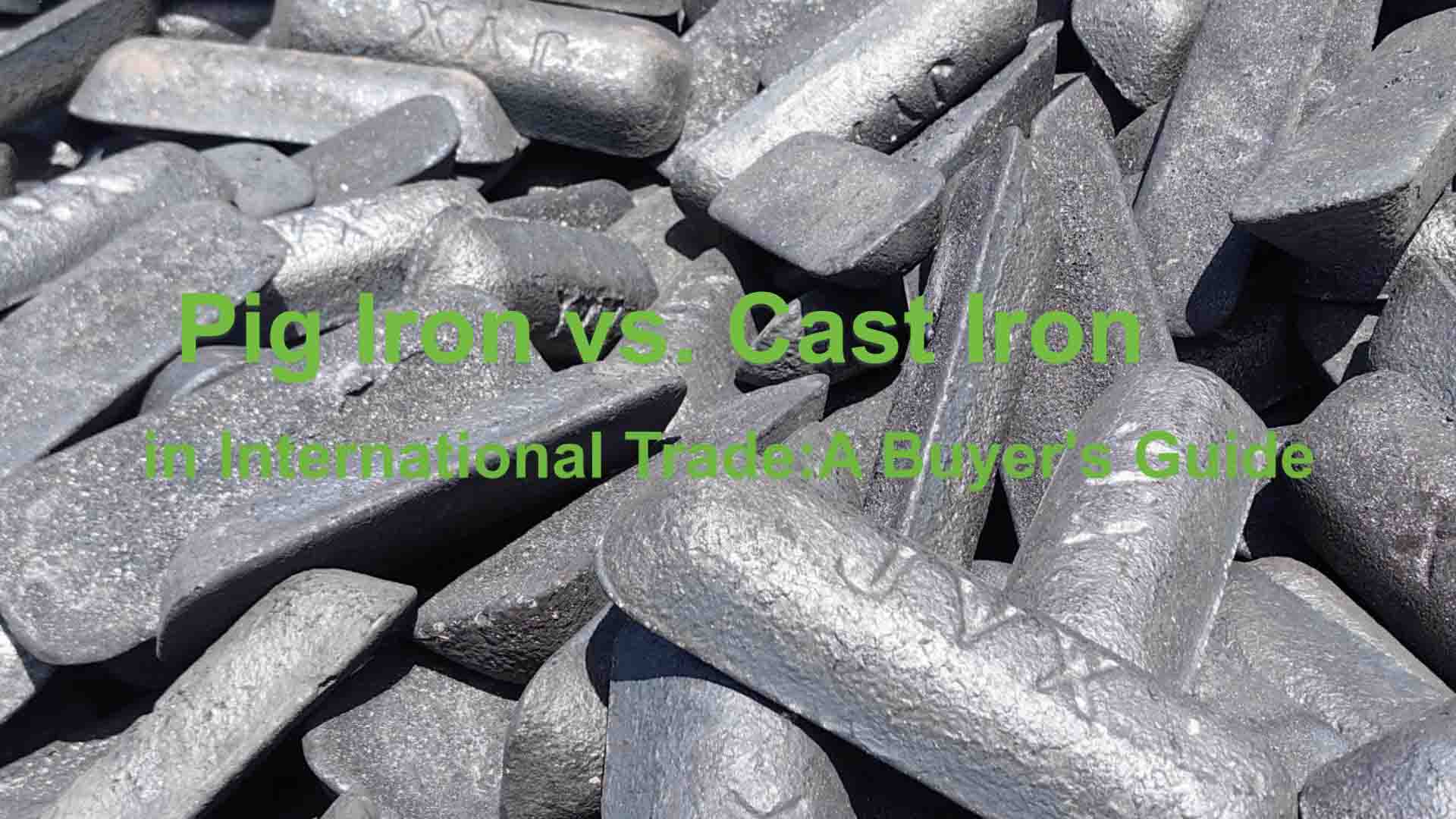Pig Iron vs. Cast Iron in International Trade: A Buyer's Guide
2025-07-07 09:42:51 hits:0
Introduction
In global commodity trading, precise terminology is crucial for smooth transactions. A common question among international buyers is: "Should we use 'pig iron' or 'cast iron' when sourcing raw iron?" This blog clarifies the distinction between these terms, backed by authoritative sources and 2025 market data, to help buyers avoid costly miscommunications.
1. Core Definitions: Pig Iron vs. Cast Iron
Pig Iron
Definition: The raw product of smelting iron ore in a blast furnace, containing 2–4.3% carbon and impurities like silicon, manganese, and phosphorus.
Production: Molten iron is cast into molds called "pigs," hence the name.
Uses: Primarily re-melted for steel production or cast into components.
HS Code: Classified under 7201 (e.g., US HTS 7201.50 for alloy pig iron).
Cast Iron
Definition: A ferrous alloy with 2–4% carbon, produced by re-melting pig iron with scrap steel and adjusting carbon content.
Production: Cast into shapes (e.g., pipes, machine parts) using sand molds.
Uses: Manufacturing castings for automotive, construction, and engineering industries.
HS Code: Falls under 7202–7205 (iron alloys or granules).
2. Terminology in International Trade
Professional Documentation
Customs Declarations: Pig iron is strictly labeled as HS 7201 in global trade data. For example, UK government trade records explicitly use "pig iron" for imports under this code.
Contracts: Industry standards (e.g., ISO 9147) mandate "pig iron" for raw material transactions, while "cast iron" refers to finished products.
Common Misconceptions
Non-Professional Contexts: Some buyers mistakenly use "cast iron" for raw iron due to its association with cast components.
Translation Errors: Chinese "铸铁" (cast iron) is sometimes incorrectly translated as "pig iron" in informal settings.
3. 2025 Market Trends & Data
Global Trade Volume
The 2025 pig iron market is projected to reach $66 billion (CAGR 3.7% from 2024), driven by steel demand in Asia and Europe.
Top exporters: China (40% global share), Brazil, and India.
Key Players
Major Suppliers: Tsingshan Holding (China), Nickel Industries (Indonesia), and Jindal Stainless (India).
Buyer Regions: Southeast Asia (45% imports), Middle East (30%), and EU (20%).
4. Practical Advice for Buyers
Use "Pig Iron" for Raw Material Purchases:
Always specify HS 7201 in contracts and customs filings.
Example: "We require 10,000 MT of high-carbon pig iron (HS 7201.50) with <0.05% sulfur."
Reserve "Cast Iron" for Finished Goods:
Use this term for components like pipes (HS 7305) or machinery parts.
Verify Supplier Documentation:
Cross-check invoices and certificates of analysis (CoA) to ensure terminology aligns with product specs.
5. Conclusion
In international trade, "pig iron" is the correct term for raw, blast-furnace-produced iron (HS 7201), while "cast iron" refers to processed alloys used in manufacturing. Misusing these terms can lead to shipment delays or contractual disputes. By adhering to HS codes and industry standards, buyers ensure seamless transactions and access to quality suppliers.
Blog Author Profile
DAWN | Pig Iron & Castings Procurement Advisor 18 years in the foundry trenches give me an edge: I know how pig iron’s chemistry impacts casting quality and can troubleshoot defects like cracks and porosity. With a 1M MT/year pig iron and 60k MT/year casting output from our in-house factory, plus 200+ verified suppliers on our platform, we offer fast price comparisons. Expect a 24-hour inquiry response—my goal? Not just closing deals, but being your go-to partner in the foundry world.
18 years in the foundry trenches give me an edge: I know how pig iron’s chemistry impacts casting quality and can troubleshoot defects like cracks and porosity. With a 1M MT/year pig iron and 60k MT/year casting output from our in-house factory, plus 200+ verified suppliers on our platform, we offer fast price comparisons. Expect a 24-hour inquiry response—my goal? Not just closing deals, but being your go-to partner in the foundry world.
📧(zbw@tiegu.net)

 en
en  fra
fra  de
de  ru
ru  ara
ara  gle
gle  it
it  jp
jp  kor
kor  th
th  zh
zh 



